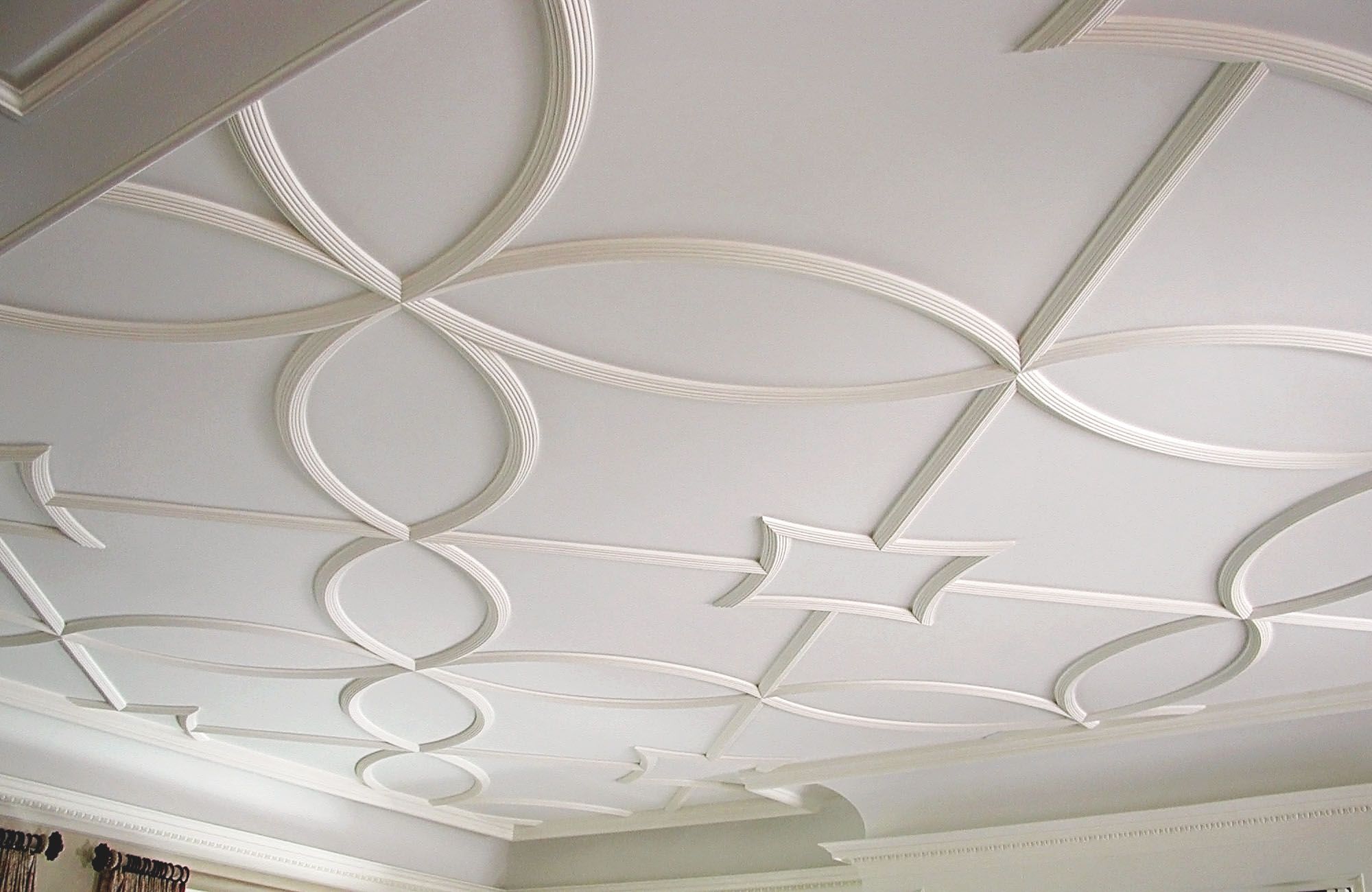Step into a world where ordinary ceilings are transformed into captivating focal points. Ceiling molding, an architectural detail often overlooked, has the power to elevate your home from simple to stunning. More than just a decorative element, ceiling molding adds depth, dimension, and a touch of elegance to any room.
This comprehensive guide delves into the world of ceiling molding, exploring various styles, materials, and installation techniques, empowering you to make informed decisions for your home. Discover how this subtle yet impactful addition can transform your living spaces.
Unveiling the Charm: What is Ceiling Molding?
Ceiling molding, also known as crown molding, cornice molding, or simply “trim,” refers to the decorative strips installed where the wall meets the ceiling. While its primary function is to enhance aesthetics, ceiling molding also serves a practical purpose, concealing imperfections and adding a polished finish.
A Style for Every Story: Exploring Different Types of Ceiling Molding
Just like every home tells a story, so does every molding style. From ornate Victorian details to sleek, modern lines, there’s a perfect ceiling molding to complement any design aesthetic.
- Crown Molding: The reigning monarch of molding styles, crown molding makes a statement with its projecting profile and intricate details. It’s ideal for adding a touch of grandeur to traditional or formal spaces.
- Cove Molding: For a softer, more understated look, cove molding provides a gentle concave curve where the wall transitions to the ceiling. Its simplicity lends itself well to contemporary or minimalist interiors.
- Bed Molding: Think of bed molding as the supporting actor to crown molding’s leading role. It’s smaller in size and often layered to create visual interest and depth.
- Dentil Molding: This classic style, characterized by evenly spaced, tooth-like blocks, adds a timeless elegance reminiscent of Greek Revival and Colonial architecture.
- Egg and Dart Molding: As its name suggests, this traditional molding features repeating patterns of oval shapes (“eggs”) alternating with pointed ovals (“darts”). It’s a hallmark of classical and neoclassical design.
- Plain/Smooth Molding: Don’t let the name fool you – plain molding offers a clean, streamlined look that complements modern and minimalist spaces seeking understated elegance.
Making the Right Choice: Factors to Consider
Before you fall head over heels for a specific molding style, it’s essential to consider these key factors to ensure a harmonious blend with your existing décor:
- Ceiling Height: Rooms with high ceilings can handle larger, more substantial molding profiles, while lower ceilings benefit from smaller, less imposing styles.
- Room Style: Your chosen molding should reflect your overall design aesthetic. Ornate crown molding complements traditional interiors, while sleek, simple moldings enhance modern spaces.
- Budget: Molding materials and design complexity influence the overall cost. Wood moldings, particularly hardwoods, tend to be more expensive than polyurethane or polystyrene alternatives.
Beyond Aesthetics: The Practical Benefits of Ceiling Molding
While aesthetics often take center stage, ceiling molding offers several practical advantages:
- Concealing Imperfections: Over time, walls and ceilings can develop cracks or uneven surfaces. Molding cleverly disguises these blemishes, creating a polished, finished look.
- Visual Interest and Depth: Ceiling molding adds architectural detail, drawing the eye upward and creating a sense of spaciousness, especially beneficial in rooms with lower ceilings.
- Increased Home Value: As a sought-after architectural detail, ceiling molding can potentially increase your home’s value, appealing to buyers who appreciate these elegant touches.
DIY or Call in the Pros? Installation Considerations
The installation process for ceiling molding can be tackled as a DIY project or entrusted to experienced professionals.
- DIY Installation: For those with a knack for home improvement, DIY installation can be a rewarding and budget-friendly option. However, it requires a certain level of skill and patience, especially when dealing with intricate designs or challenging angles.
- Professional Installation: Hiring a professional installer guarantees a flawless finish, particularly for complex projects or if you’re working with high ceilings. Their expertise ensures accurate measurements, precise cuts, and a seamless installation.
Resources for Success: Tools, Tips, and Trusted Guides
Whether you choose the DIY route or hire a professional, these resources can guide you:
- Essential Tools: A miter saw, nail gun, measuring tape, level, and safety glasses are crucial for a successful installation.
- Helpful Resources: Reputable home improvement retailers like The Home Depot offer detailed installation guides and video tutorials on their websites.
- Professional Networks: Seek recommendations from friends, family, or online platforms like Angie’s List to find reputable contractors in your area.
Navigating the World of Molding: Cornice vs. Crown
While the terms “cornice” and “crown molding” are often used interchangeably, a subtle distinction exists, primarily rooted in their historical functions.
- Cornice Molding: Historically, cornices served a practical purpose, projecting outward from buildings to direct rainwater away from walls and windows. Their designs were often more elaborate, reflecting their dual role as both decorative and functional elements.
- Crown Molding: In contemporary interior design, crown molding primarily serves a decorative purpose, adding a finishing touch and visual interest to rooms. It offers a broader range of styles and sizes to complement various design aesthetics.
The choice between cornice and crown molding depends on your design goals. If you’re seeking a historically accurate and functional element, cornices might be your go-to. However, if you prioritize design flexibility and a wider range of styles, crown molding offers greater versatility.
Ceiling Molding: A Timeless Investment
From enhancing aesthetics to increasing home value, ceiling molding offers a multitude of benefits. With a plethora of styles, materials, and installation options available, there’s a perfect solution for every home and budget. Embrace the transformative power of ceiling molding and elevate your living spaces from ordinary to extraordinary.
- Pontoon Boat Seat Covers: The Ultimate Guide to Protection & Buying - April 17, 2025
- Covers for Pipework: A Complete Guide to Materials, Installation & More - April 17, 2025
- Dog Patio Door Inserts: A Comprehensive Guide to Choosing & Installing - April 17, 2025










